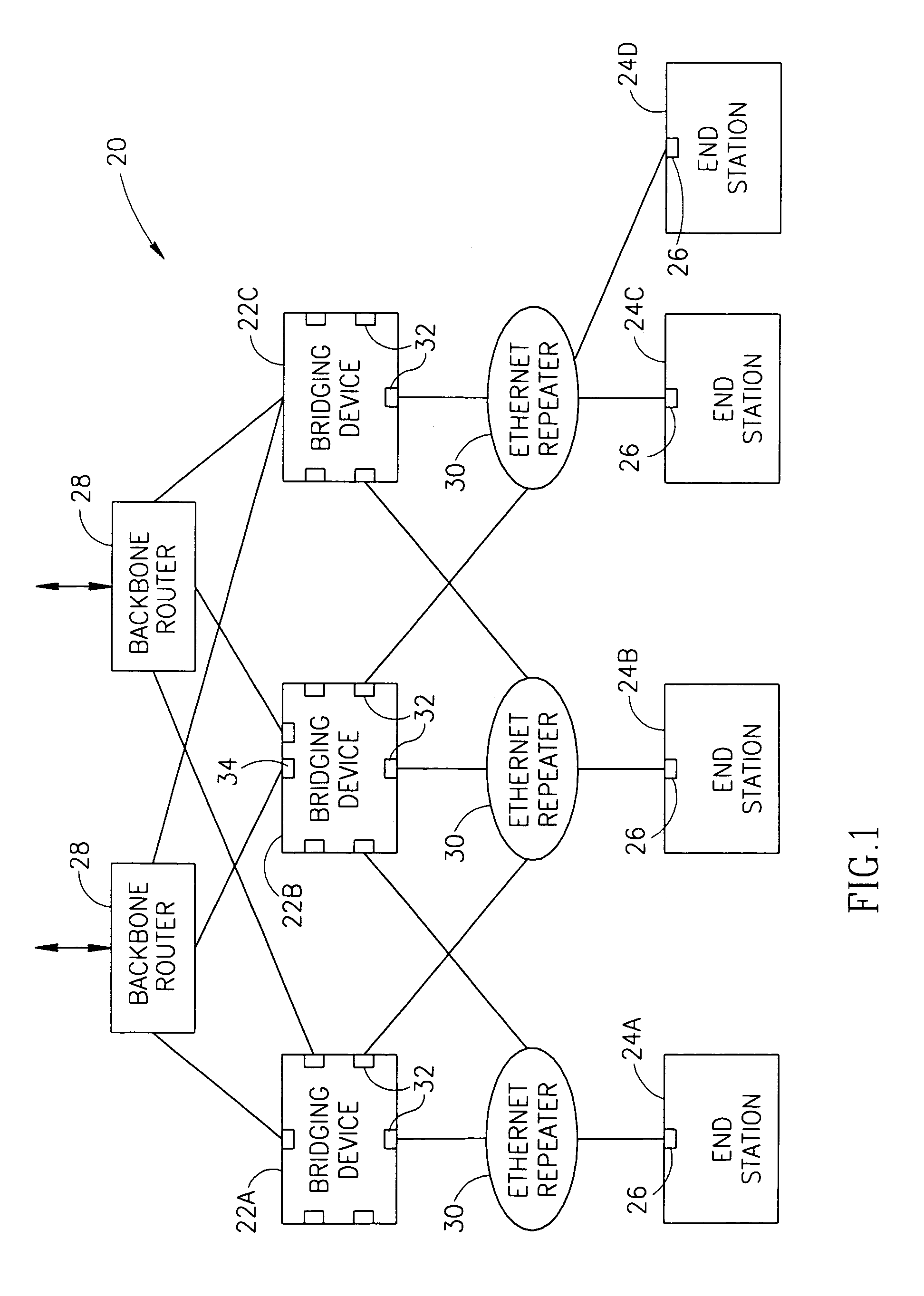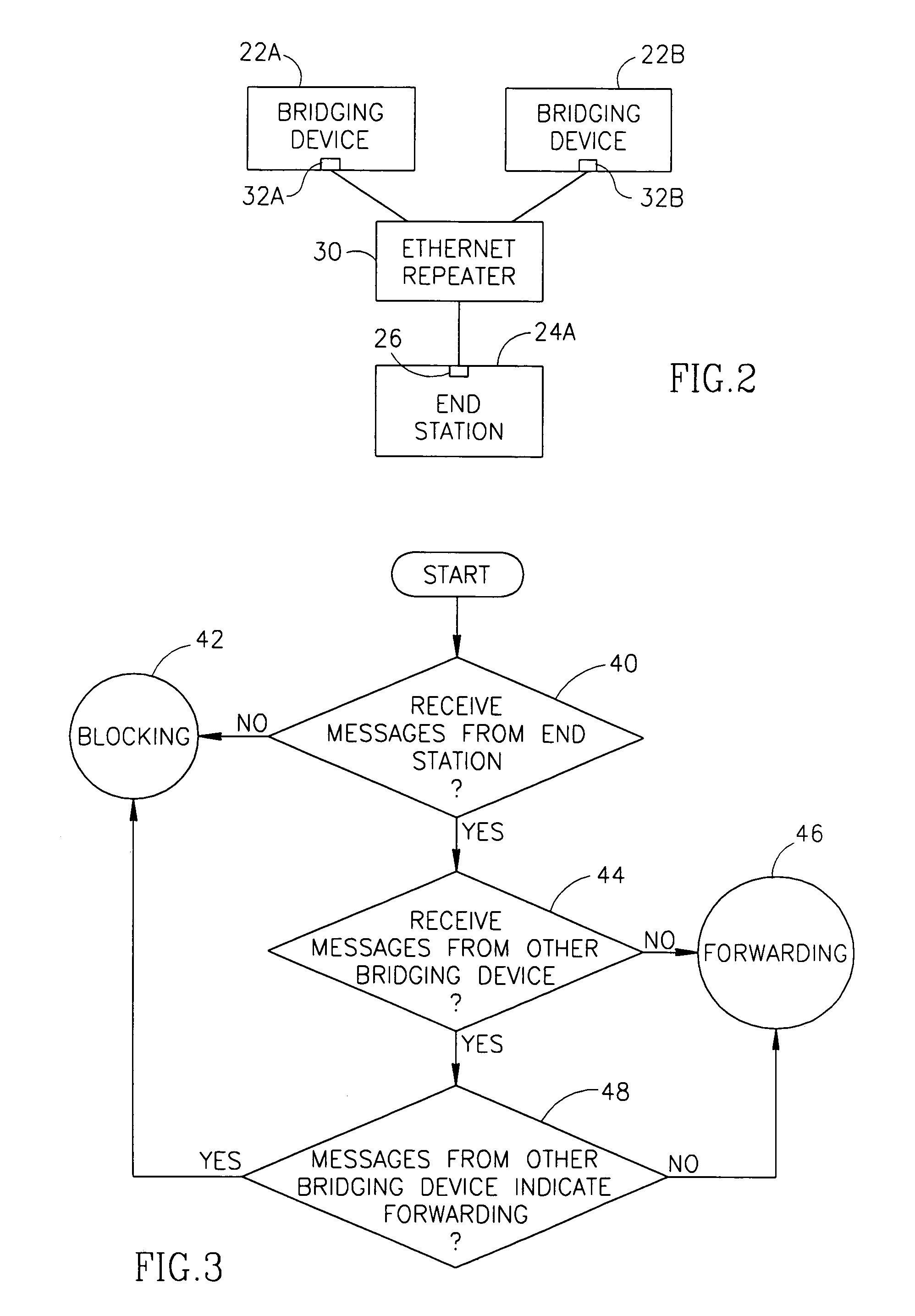Distributed port-blocking method
a technology of port blockage and distribution, applied in the field of communication networks, can solve the problems of increasing the probability of failure, the impact of the complexity of the device, so as to reduce the number of possible operability changes
- Summary
- Abstract
- Description
- Claims
- Application Information
AI Technical Summary
Benefits of technology
Problems solved by technology
Method used
Image
Examples
Embodiment Construction
[0063]FIG. 1 is a schematic illustration of a local area network 20, in accordance with a preferred embodiment of the present invention. Network 20 comprises a plurality of bridging-devices 22 which are used to connect a plurality of end-stations 24 (marked in FIG. 1 as 24A, 24B, 24C and 24D) to each other and / or to external networks, through one or more backbone bridging-devices and / or routers, such as a pair of backbone bridging-devices which are also routers, referred to as backbone routers 28 in FIG. 1. One or more of end stations 24 comprise only a single port 26 which is suitable for connecting to any of bridging-devices 22. Preferably, the ports 26 of end-stations 24 are connected through respective Ethernet repeaters 30 to a plurality of ports 32 on different bridging-devices 22. Thus, redundancy is achieved in connecting end-stations 24 to bridging-devices 22, even though each end-station 24 has only a single port 26. It is noted that one or more of repeaters 30 may be repl...
PUM
 Login to View More
Login to View More Abstract
Description
Claims
Application Information
 Login to View More
Login to View More - R&D
- Intellectual Property
- Life Sciences
- Materials
- Tech Scout
- Unparalleled Data Quality
- Higher Quality Content
- 60% Fewer Hallucinations
Browse by: Latest US Patents, China's latest patents, Technical Efficacy Thesaurus, Application Domain, Technology Topic, Popular Technical Reports.
© 2025 PatSnap. All rights reserved.Legal|Privacy policy|Modern Slavery Act Transparency Statement|Sitemap|About US| Contact US: help@patsnap.com



